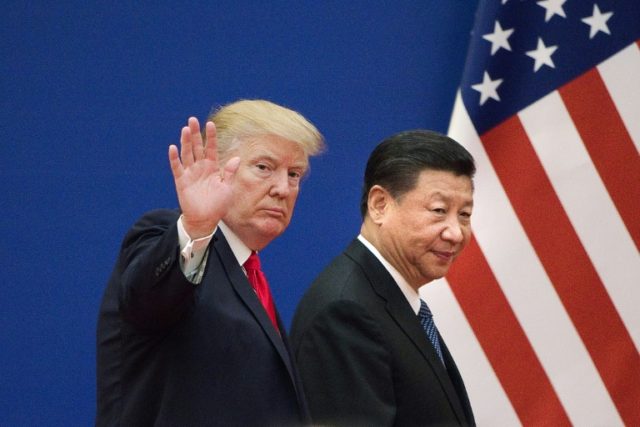President Donald Trump Wednesday announced tariffs and investment restrictions aimed at convincing China to halt practices the U.S. believes are a form of economic aggression.
The president announced the new policies flanked by Secretary of Commerce Wilbur Ross, U.S. Trade Representative Robert Lighthizer, and other officials at a White House ceremony Wednesday afternoon. The tariffs will take aim at around $50 billion of Chinese exports, according to senior administration officials.
The president is also ordering the Treasury Department to formulate restrictions on Chinese investments in U.S. companies, according to senior White House adviser Everett Eisenstadt. U.S Trade Representative Robert Lighthizer will also initiate an action against China at the World Trade Organization for violations of international trade laws.
“The end objective of these actions is to get China to modify its unfair trade practices,” Eisenstadt said in a briefing with reporters.
The U.S. had a trade deficit in goods of $370 billion last year, according to White House trade adviser Peter Navarro. The administration estimates that this translates into around 2 million lost jobs.
“China has sought to gain access to intellectual property and cutting-edge technology developed by U..S. business through such wrongful practices as systemic, government-driven investment in U.S. companies, unreasonable requirements and limiting restrictions intended to pressure U.S. firms, and cyber-enabled intrusions,” Secretary of Treasury Steven Mnuchin said in a statement.
The U.S. began an investigation into China’s trade practices focussed on intellectual property, known as a Section 301 investigation, last year, after talks between the Trump administration and Chinese leadership failed to produce meaningful reforms of Chinese policies. That investigation concluded that China has forced U.S. companies to hand over technology to Chinese companies and partner with Chinese companies in order to obtain access to Chinese markets. In addition, the investigation found a concerted effort by the Chinese government to obtain U.S. technology by acquiring U.S. firms, according to Eisenstadt.
“The aim of the tariffs will be to compensate the U.S. for harm of China’s restrictive ownership requirements,” Narvarro said.
The administration developed a computer algorithm to calculate that harm, senior administration officials said. Following Thursday’s announcement, the U.S. Trade Representative will have 15 days to produce a list of the Chinese products that will be subject to the tariffs. That list will then go through the normal administrative rule-making process, giving the public and companies affected a chance to comment and respond. It’s likely that the list will be based on statements by Chinese officials about the areas of technology they seek to dominate.
“If China dominates the industries of the future, it will be very difficult for the U.S. to have an economic future,” Navorro said.
Administration officials said they have engaged in “significant outreach” to U.S. allies and trading partners and expect international support for its anti-China program.
The Treasury Department will be given 60 days to present the president with proposed investment restrictions. According to senior administration officials, Chinese investments in U.S. technology companies are “not aimed at earning a fair rate of return” but instead based on strategic and military goals of the Chinese government.
“China is using its sovereign wealth funds and state-owned vehicles to buy up U.S. technology,” a senior administration official said.
The restrictions on investment will go beyond the current process of review by the Committee on Foreign Investment in the United States, the inter-agency panel that currently reviews acquisitions of U.S. companies by foreign entities.
“The President is standing up for American corporations here. He has their back,” a senior administration official said.
The administration says its aims are not to create a trade war but to force China to reform its unfair policies. It says that earlier efforts to get China to change course have failed.
“The dialogues with China failed under the Bush and Obama administrations,” a senior administraiton official said. “In this case, talk is not cheap. It has been very expensive.”

COMMENTS
Please let us know if you're having issues with commenting.